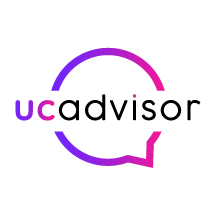
29 Nov Overcoming CCaaS Adoption Challenges: Bringing Cloud Contact Center into any Business
Customer experience is the number one differentiator for any growing company. If you can deliver a meaningful, relevant, and engaging experience to your target audience, you’ll earn their undying loyalty. Though the way brands and customers connect has changed somewhat over the years, one thing remains certain, the contact centre is still at the heart of customer experience.
Of course, today’s contact centre is a world apart from the complex ecosystems many companies are used to. In place of old-fashioned offices full of ringing phones, we now have a virtual environment where agents can serve customers on every channel, all over the world. The era of the cloud and contact centre as a service (CCaaS) has officially arrived. In fact, Grandview Research says this space will be worth around $72.3 billion by 2027.
The only problem? To leverage all the benefits CCaaS has to offer, you first need to convince your team to adopt this new technology. So, how do you create a CCaaS strategy that gets everyone on board?
The Rising Demand for CCaaS
Making any significant change in the business landscape can be a time-consuming and complicated process. Moving your customer experience strategy from an on-premises contact centre into the cloud can seem like an almost overwhelming feat at first. However, increasingly, companies are discovering that a cloud based CCaaS solution is the only way forward for consistently great CX.
For years, flexible SaaS solutions like Contact Centre as a Service have been gaining popularity as a cost-effective and versatile tool for customer conversations. You can choose the tools you need to serve your customers from a range of available options, implement new features in seconds, and pay only for what you use. By 2022, CCaaS is set to be the format of 50% of all contact centres.
Since the pandemic, the need for these flexible contact centres have only increased. The events of 2020 made it clear that most contact centres weren’t equipped for a future of remote agents. When professionals can’t make it into the office, the entire customer service strategy of many leading companies can crumble to nothing.
Increasingly, CCaaS is emerging not just as a tool for innovation, but as an essential part of ongoing business continuity and growth. Just some of the benefits of switching to CCaaS tech include:
- Reduced operating costs
- Fewer missed calls
- Better team monitoring and management
- Improved first-call resolution rates
- Better quality of service
- Stronger insights and analytics
- Support for remote agents
- Easy access to innovative features
Building a CCaaS Adoption Plan
Despite the many benefits of the modern contact center as a service solution, there’s a good chance that everyone in your team won’t be fully prepared to switch to a cloud environment. Making the transition into a CCaaS landscape means getting the buy-in of not just all your major shareholders and business leaders, but your employees too.
Any technology will only work best when your teams are taking full advantage of it. With that in mind, it’s important to develop an effective CCaaS adoption plan This plan should answer crucial questions about how you’re going to bring this technology to your team.
The best strategy for a CCaaS adoption plan will begin with setting some concrete goals for your new investment. Rather than just purchasing a CCaaS solution with the most exciting features and products, ask yourself what features you need to solve existing problems for your team, or drive better experiences for your customers. Here are some top tips for your adoption strategy.
1. Choose Goals as a Team
Working backwards from a set of specific goals you hope to accomplish with your CCaaS solution will ensure you invest in the technology most likely to make the biggest difference to your team. However, it often takes an entire team to determine what your CCaaS goals should be. Bringing your stakeholders, business leaders, and executives together to discuss what you’d like to do better on the contact centre is crucial.
For instance, if your overall goal is to improve customer service and business reputation, you’ll need a CCaaS solution that allows you to meet your customers on their preferred channels and collect information about their experience.
Keep in mind that different people from your team might have different perceptions of what they consider to be the most important feature for your new CCaaS solution. For your CFO, for instance, the most important factor may be making sure you only have one bill to manage for your contact center analytics, recording tools, and omnichannel assets.
For your CTO, on the other hand, the most important goal may be finding an environment that’s easy to manage remotely. If you have a remote team, your CTO might need to provision tools and rollout software updates from anywhere. Bring your entire team of stakeholders and leaders together and make a list of the goals you want to accomplish, and the features most important to reaching those targets.
2. Consider Features You Need Now, and in the Future
One of the biggest features of transitioning from the on-premises contact centre to a CCaaS environment, is that you’ll have access to a highly flexible and changeable environment. You don’t have to rip and replace your entire ecosystem if you want to upgrade. However, some contact centre providers are more future-proofed than others.
When making a list of the features you need your CCaaS solution to have, think about what you need most now, as well as the kind of functionality you’d like to have access to as your business grows. For instance, right now, you might need local data sovereignty and an omnichannel communication environment for your contact centre today. However, as your business begins to grow, you might need to ensure your provider can give you high-quality calling support in other regions around the world.
If you’re planning on making your business as innovative and pioneering as possible with your contact centre technology, then you may need to look for a provider who can offer things like AI and analytical tools at a pace that suits you. Don’t be afraid to explore the development and innovations strategies of any business you want to work with.
Having a company that can serve you both now and in the future, ensures you don’t have to go through the entire adoption process again sometime in the near future.
3. Know What You Need from a CCaaS Provider
Choosing the right CCaaS vendor is a crucial component of ensuring the right adoption for your team. Not only will a vendor give you the right functionality you need to transform customer experience both now and, in the future, but they can also help you with delivering your new technology to your employees. When assessing your options, look into the training and customer experience you can expect from your CCaaS solution provider.
Most CCaaS companies will have some aspect of customer support and onboarding guidance to offer. This might include giving your employees the documentation, articles, and training videos they need to understand how the software works. Some CCaaS providers can also offer things like one-on-one professional training and success managers. However, a higher level of handholding generally comes with a higher price tag for your CCaaS subscription.
If you know you’re going to need a lot of support from a CCaaS vendor to make your goals a reality, then make sure you look into the customer service options available before you sign up for any specific subscription or package. Usually, when you reach out to a CCaaS provider to get a quote, you can ask questions about the kind of support and training they provide.
4. Prioritize User Experience
When implementing a new CCaaS solution, a lot of companies get caught up focusing on how the technology is going to drive a better customer experience. However, in most cases, a good customer experience today starts with an amazing agent experience. If your remote, hybrid, and on-premise contact centre agents are going to be using this technology every day to connect with clients on multiple channels, it needs to be easy to use.
Think about how the technology prioritizes user experience to ensure your employees can use the technology wherever they are with as little support as possible. For instance, many modern CCaaS solutions come with back-end collaboration systems where employees can reach out through chat to available agents to get assistance when they’re struggling.
Your CCaaS tools may also have in-built virtual assistants and chatbots which can answer common questions about how to add a call to a queue or how to upload customer information to a CRM system from the contact centre. This should mean that your employees can address their queries without having to contact a member of tech support.
Other ways to ensure your CCaaS solution supports great user experience include looking for:
- A clean user interface that works anywhere: A good CCaaS solution should have a simple, clean, and easy-to-navigate interface which works just as well on smart phones and mobile devices as laptops and computers.
- Excellent management tools: Good management and control tools will allow your business leaders to provision tools and offer access to different CCaaS features remotely, without the need for excessive input from users.
- Integrations: Your CCaaS solutions should naturally integrate with the tools your agents already use, like service desks and CRMs, so they don’t have to run multiple apps at the same time.
5. Roll Out Technology Slowly
As important as it is for many companies to make the transition to the digital contact centre today, this doesn’t mean that adoption and innovation should be rushed. Most companies will need to make the transition gradually to avoid overwhelming employees.
Start by introducing your CCaaS technology to some of the first adopters in your business – these are the people most likely to be comfortable using new technology and advocating the use of that tech to others. Gather as much feedback as you can from these initial adopters on what’s good about the CCaaS solution, what they’d like to change, and which features they struggle with.
When you’re comfortable that your first adopters are happy with the software, you can start to introduce it to a wider group of employees, allowing your informed initial users to act as mentors for the new teams. Rolling technology out slowly will help you to respond immediately to any issues your employees have. You should also be able to use this strategy to reduce the risk of downtime.
Be aware that some employees in your ecosystem may need additional support and guidance. These late adopters might need more training than the rest of your staff, or one-on-one guidance to feel fully comfortable with the new software. Ensure you’re dedicating enough time and budget to get everyone on-board, and ready to use the technology every day.
Plan your Post Implementation Strategy
Finally, once you’ve rolled the technology for your new CCaaS solution out to your entire team, it’s time to measure, and collect information to determine whether your rollout has been a success. You should have started this CCaaS adoption plan with certain goals in mind. So, it’s important to have a plan for how you’re going to track your progress.
For instance, if your original goal was to improve customer satisfaction and loyalty, you can track metrics like CSAT score, Net Promoter Score, and even retention levels or customer lifetime value. It’s also worth collecting as much feedback as possible from your customers about their perception of your new customer service strategy and whether they think it’s improving.
Collect information from your contact centre agents too. Pay attention to how efficient and productive these team members are when using the new CCaaS solution. Though you might notice some inefficiencies at first when staff are getting used to the technology, you should gradually see performance levels improving.
Combine your numbers and metrics with the actual insights you get from your employees for guidance on how to continue ensuring adoption among everyone in your team.



